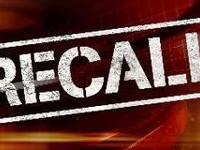More auto recalls; more recall notices being ignored
- Details
- Published on Monday, 25 July 2016 16:44
- Written by PRNewswire
Record numbers of automobile safety recalls, parts shortages, and inaction on the part of the owners of recalled vehicles have created a serious challenge for auto manufacturers and dealers.
According to NHTSA data analyzed by J.D. Power through its SafetyIQ, there are more than 45 million vehicles that were the subject of safety recalls issued between 2013 and 2015 that are still un-remedied.
Over the past 20 years, more than 437 million vehicles have been affected by safety recall decisions in the United States. In 2015 alone more than 51 million vehicles were the subject of safety recalls, more than in any previous year.
By analyzing National Highway Traffic Safety Administration (NHTSA) and proprietary J.D. Power benchmarking data using its SafetyIQ platform, J.D. Power has identified that primary factors impacting completion rates for those recalls are vehicle age, vehicle type, overall population of recall, and type of recall.
"The steady surge in recalls, combined with NHTSA's stated goal of 100 percent recall completion rates, have made the number of un-remedied recalls still on the road a critical statistic for automakers and dealers," said Renee Stephens, vice president of U.S. automotive at J.D. Power. "By understanding the behavioral trends of vehicle owners, as well as recall completion rates among different vehicle and recall types, as an industry we can better tailor communications to improve those completion rates."
Following are the key findings in the J.D. Power SafetyIQ analysis (all data is based on recall decisions made from 2013-2015, as reported through six quarters of completion information):
- Un-Remedied Vehicles More Common in Older Models: The total recall completion rate for vehicles with model years between 2013 and 2017 is 73 percent. This compared with a completion rate of just 44 percent for vehicles manufactured between 2003 and 2007.
- Vehicle Type Plays a Big Role in Recall Completion: Among vehicle segments, large/work vans have the highest overall recall completion rate at 86 percent, followed closely by compact premium SUVs at 85 percent. This contrasts with the mid-premium sports car segment, which has a completion rate of just 31 percent, and with large SUVs, which have a completion rate of 33 percent.
- Larger Populations Present Bigger Completion Challenges: The completion rate for individual recalls affecting more than 1 million vehicles is 49 percent. This compares with a 67 percent completion rate for individual recalls affecting less than 10,000 vehicles. It is sometimes difficult to obtain parts to launch large campaigns. In addition, customers can more easily receive a targeted communication method, such as a phone call, with a smaller population of vehicles.
- Powertrain and Electrical System Recalls Most Likely to Get Fixed: Of the major safety components, the groups with the highest recall completion rates are powertrain (71 percent), electrical (62 percent) and hydraulic brakes (66 percent). Airbags and suspension issues have the lowest completion rates at 47 percent and 48 percent, respectively.
"By better understanding the specific factors driving recall compliance among vehicle owners, manufacturers and dealers can better tailor their communications and manage the recall process much more efficiently," said Stephens. "This is a critical level of intelligence for the industry, which we believe will ultimately help reduce the number of un-remedied vehicles still on the road."
For more information on J.D. Power SafetyIQ, please visit www.jdpower.com/safetyiq
Record numbers of automobile safety recalls, parts shortages, and inaction on the part of the owners of recalled vehicles have created a serious challenge for auto manufacturers and dealers. According to NHTSA data analyzed by J.D. Power through its SafetyIQ, there are over 45 million vehicles that were the subject of safety recalls issued between 2013 and 2015 that are still un-remedied.
Over the past 20 years, more than 437 million vehicles have been affected by safety recall decisions in the U.S. In 2015 alone over 51 million vehicles were the subject of safety recalls, more than in any previous year. By analyzing National Highway Traffic Safety Administration (NHTSA) and proprietary J.D. Power benchmarking data using its SafetyIQ platform, J.D. Power has identified that primary factors impacting completion rates for those recalls are vehicle age, vehicle type, overall population of recall, and type of recall.
"The steady surge in recalls, combined with NHTSA's stated goal of 100% recall completion rates have made the number of un-remedied recalls still on the road a critical statistic for automakers and dealers," said Renee Stephens, vice president of U.S. automotive at J.D. Power. "By understanding the behavioral trends of vehicle owners, as well as recall completion rates among different vehicle and recall types, as an industry we can better tailor communications to improve those completion rates."
Following are the key findings in the J.D. Power SafetyIQ analysis (all data is based on recall decisions made from 2013-2015, as reported through 6 quarters of completion information):
- Un-Remedied Vehicles More Common in Older Models: The total recall completion rate for vehicles with model years between 2013 and 2017 is 73%. This compared with a completion rate of just 44% for vehicles manufactured between 2003 and 2007.
- Vehicle Type Plays a Big Role in Recall Completion: Among vehicle segments, large/work vans have the highest overall recall completion rate at 86%, followed closely by compact premium SUV's at 85%. This contrasts with the mid-premium sports car segment, which has a completion rate of just 31%, and with large SUV's which have a completion rate of 33%.
- Larger Populations Present Bigger Completion Challenges: The completion rate for individual recalls affecting more than 1 million vehicles is 49%. This compares with a 67% completion rate for individual recalls affecting less than 10,000 vehicles. It is sometimes difficult to obtain parts to launch large campaigns. In addition, customers can more easily receive a targeted communication method, such as a phone call, with a smaller population of vehicles.
- Powertrain and Electrical System Recalls Most Likely to Get Fixed: Of the major safety components,the groups with the highest recall completion rates are powertrain (71%), electrical (62%) and hydraulic brakes (66%). Airbags and suspension issues have the lowest completion rates at 47% and 48% respectively.
"By better understanding the specific factors driving recall compliance among vehicle owners, manufacturers and dealers can better tailor their communications and manage the recall process much more efficiently," said Stephens. "This is a critical level of intelligence for the industry, which we believe will ultimately help reduce the number of un-remedied vehicles still on the road."
For more information on J.D. Power SafetyIQ, please visit www.jdpower.com/safetyiq


















































